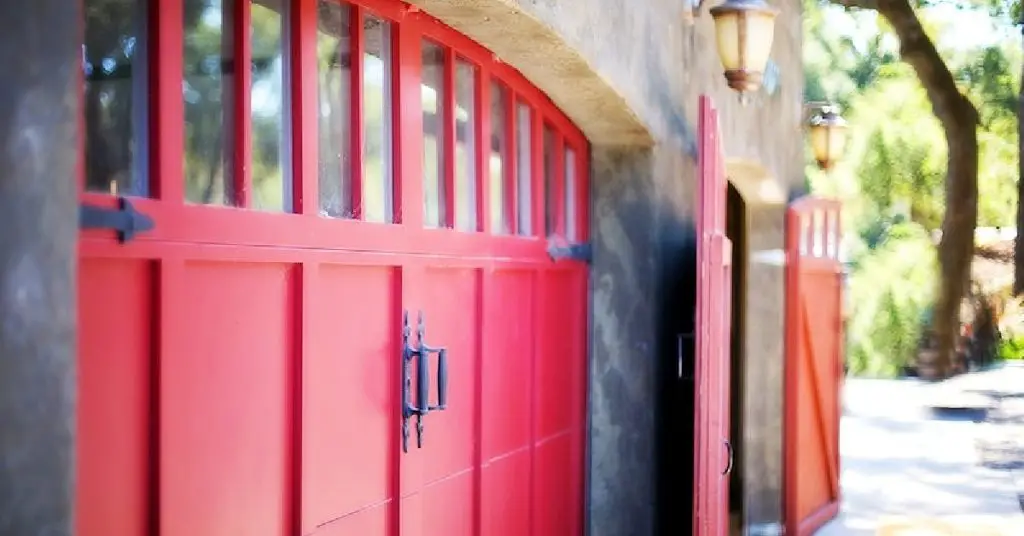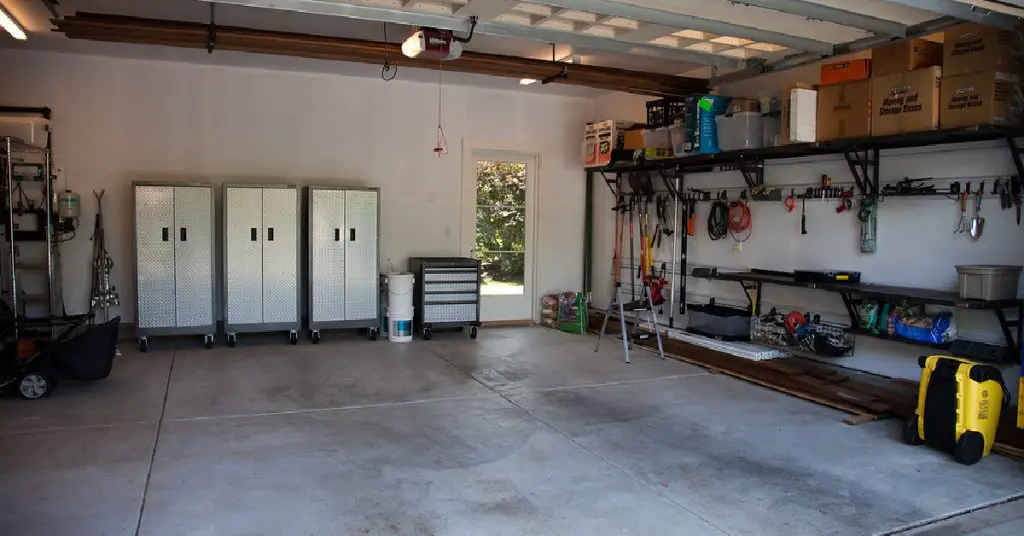Adding a bathroom to a detached garage can be a great way to increase the functionality and value of your property. A bathroom in a detached garage can be used as an additional bathroom for guests, a convenient place for outdoor enthusiasts to clean up after a day of adventure, or even a private space for a teenager or in-law suite. However, adding a bathroom to a detached garage can also be a significant project that requires careful planning and budgeting. It is important to check local laws, permits, and building codes and consider factors such as ventilation, plumbing, and drainage. In this guide, we will walk you through the process how to add a bathroom to a detached garage, including the steps, project costs, and considerations you’ll need to keep in mind.
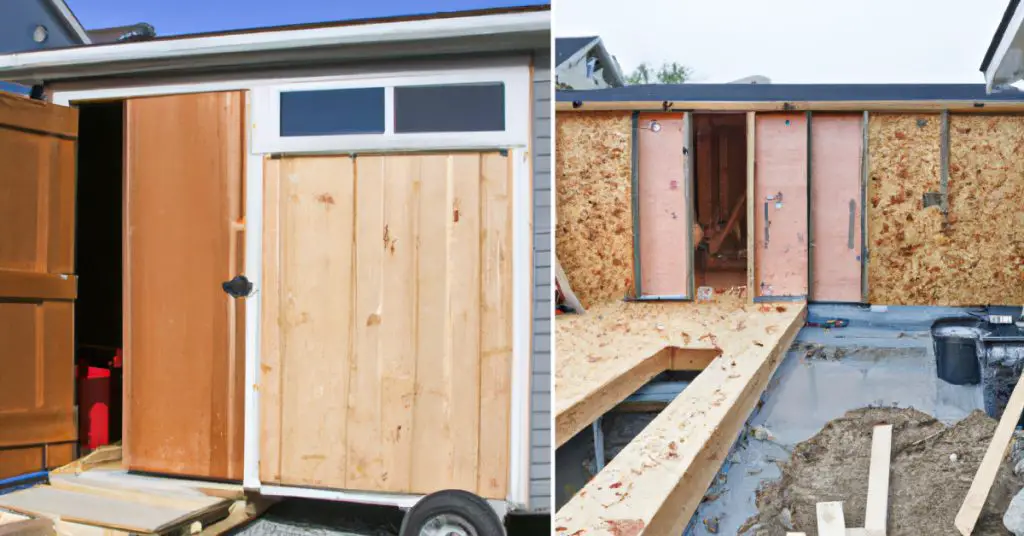
Why Add a Bathroom to a Detached Garage?
Adding a bathroom to a detached garage can provide several benefits. Some of the key reasons to add a bathroom to a detached garage include the following:
- Convenience: Having a bathroom in the detached garage eliminates the need to go back and forth between the house and garage, especially if the garage is used as a workspace, home gym, or guest room.
- Comfort: A bathroom in the detached garage can provide comfort and privacy for guests or family members who may be using the garage as a living space.
- Increased functionality: A bathroom in a detached garage can significantly increase the functionality of the space, making it more versatile and valuable.
- Increased property value: Adding a bathroom to a detached garage can increase the value of your property, making it more attractive to potential buyers.
- Cost-effective: While adding a bathroom to a detached garage can be an investment, it can be a cost-effective way to add living space to your home without the need to add on to your existing house.
It’s essential to consult with professionals such as architects, builders, plumbers, and septic system experts to ensure that the project is completed safely, efficiently, and according to the building codes. It’s also essential to create a detailed budget for the project, considering all the costs involved, to ensure that the project is completed within your budget.
6 Easy Steps for How to Add a Bathroom to a Detached Garage
Step 1: Check Local Laws and Secure Necessary Permits
Before beginning any construction on a detached garage, it is important to check local laws and building codes to ensure that the project complies with all regulations. This includes checking the zoning laws in your area to confirm that adding a bathroom to a detached garage is allowed. It’s also important to check with the local building department to see if any permits are required for the project. The permits you may need depend on your location and the type of work you’re planning to do, but they might include electrical, plumbing, and building permits.

Securing the necessary permits is a crucial step in the process of adding a bathroom to your detached garage. It ensures that the project complies with local laws and codes and protects you and your property. You may be subject to fines or legal action without the proper permits. Additionally, if you choose to sell your property in the future, the lack of proper permits can affect the sale.
It’s worth consulting with professionals such as architects, builders, and plumbers to ensure that the project complies with local laws and codes. They will know the specific requirements in your area and can guide you through the process of obtaining the necessary permits.
Step 2: Evaluate the Garage’s Plumbing and Electrical Requirements
Before beginning any bathroom renovation in a detached garage, it is essential to evaluate the garage’s existing plumbing and electrical requirements. This includes assessing the distance from the main water and sewer lines and the condition and capacity of the existing plumbing and electrical systems.
Regarding plumbing, you will need to determine if the existing pipes are in good condition and of the appropriate size to handle the additional water pressure usage from the new bathroom. If the existing water pipes are old or in poor condition, they may need to be replaced or upgraded. Additionally, you’ll need to determine if the existing sewer line can handle the additional waste from the new bathroom, if it needs to be connected to the main sewer line, or if a septic system is required.
In terms of electrical, you will need to determine if the existing electrical system can handle the additional power usage from the new bathroom. This includes determining if there is enough amperage and voltage to support the added electrical loads such as lighting, ventilation, and appliances. If the existing electrical system is inadequate, it may need to be upgraded, or new circuits may need to be added.
Consulting with professionals such as plumbers and electricians can help you determine the existing plumbing and electrical requirements and inform you of any potential issues or upgrades that may be required. It’s essential to consider and address these issues before starting any construction to avoid delays or additional costs during the project.
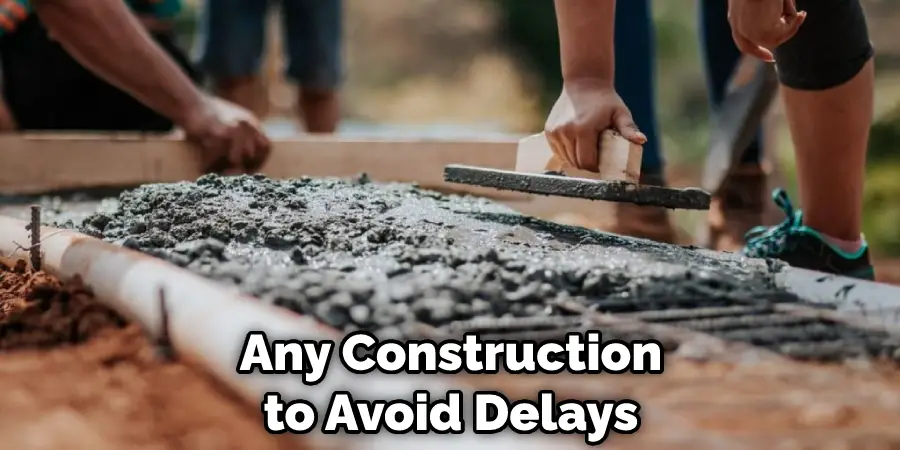
Step 3: Measure the Garage and Plan the Bathroom Layout According to the International Residential Code
Once you have determined the existing plumbing and electrical requirements, the next step is to measure the garage and plan the bathroom layout. This includes determining the size and location of the bathroom within the garage and the size of the fixtures and appliances that will be included.
When measuring the garage, it’s essential to consider the minimum clearance requirements as per the International Residential Code (IRC). According to the IRC, there must be 21 inches (53cm) of clearance in front of the finished toilet and 15 inches (38cm) of space from the center of the bowl to the bathroom walls on either side of the macerating toilet.
It’s also important to consider the overall layout of the garage and how the bathroom will fit within the existing space. This includes determining the best location for the toilet, sink, shower, or bathtub and the best location for the electrical and plumbing connections. It’s recommended to consult with professionals such as architects, builders, and plumbers to assist you in determining the best layout that complies with the IRC and fits within the existing space.
Creating a detailed bathroom layout plan will also help you determine the materials, fixtures, and appliances required for the project. It will also help you to create a realistic budget for the project. It’s essential to keep in mind that the layout should also be functional and easy to use, making sure that the fixtures and appliances are placed in a way that is convenient and easy to access.
Additionally, it’s crucial to consider accessibility and safety when planning the layout. This includes ensuring that the bathroom is accessible for people with disabilities and that the fixtures and appliances are placed to minimize the risk of slip and fall accidents.
Overall, step 3 is crucial in adding a bathroom to a detached garage as it sets the foundation for the project and helps ensure that the bathroom will be functional, safe, and compliant with the IRC. It’s essential to take the time to carefully plan the layout and measure the garage to ensure the project’s success.
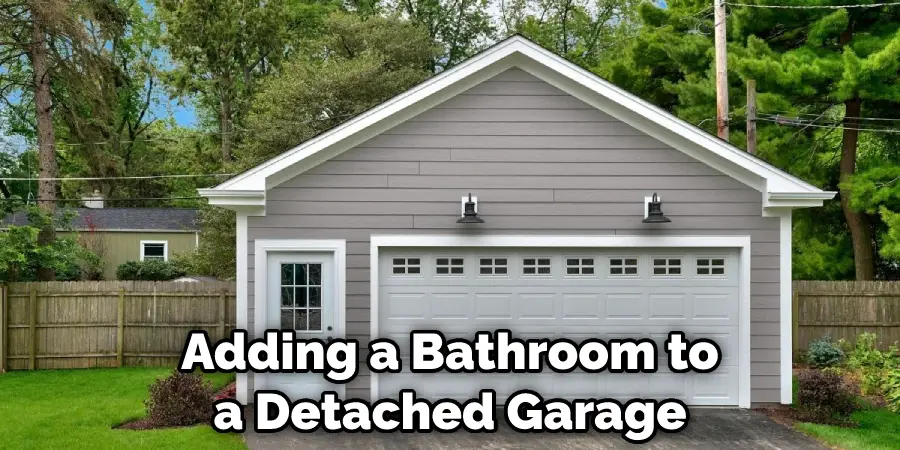
Step 4: Considerations for Ventilation, Plumbing, and Drainage
After determining the layout and size of the bathroom, it’s essential to consider the project’s ventilation, plumbing, and drainage requirements. Proper ventilation is essential to prevent moisture and mold buildup and ensure that the bathroom is comfortable and safe.
Regarding plumbing, it’s essential to ensure that the bathroom has proper hot water supply lines and a drainage system. This includes ensuring that the plumbing is connected to the main water and sewer lines and that the fixtures and appliances are properly vented. It’s also important to consider the type of fixtures and appliances used in the bathroom, such as a toilet, sink, shower, or bathtub, and to ensure that they are properly connected to the plumbing system.
Proper drainage is also important to ensure that the bathroom functions correctly and that wastewater is properly disposed of. This includes ensuring that the bathroom has a proper P-trap and that the installing drainage pipes are correctly connected to the main sewer line or septic system.
Consulting with professionals such as plumbers and ventilation experts can help you determine the project’s proper ventilation, plumbing, and drainage requirements and ensure that the bathroom is vented correctly, plumbed, and drained. It’s essential to address these issues before starting construction to avoid delays or additional costs during the project.
Step 5: Installation and Costs
After determining the layout, size, ventilation, plumbing, and drainage requirements, the next step is to install the bathroom fixtures and appliances. This step includes installing the toilet & shower entry, sink, or bathtub, and the electrical and plumbing connections. It’s important to hire professionals such as plumbers and electricians to ensure that the bathroom is installed correctly and that the fixtures and appliances are properly connected to the plumbing and electrical systems.
When it comes to costs, adding a bathroom to a detached garage can be a significant investment. The cost to add a bathroom to a detached garage will depend on various factors, such as the size of the bathroom, the type of fixtures and appliances used, and the labor cost. The cost can also vary depending on the condition of the existing plumbing and electrical systems and any upgrades that may be required.
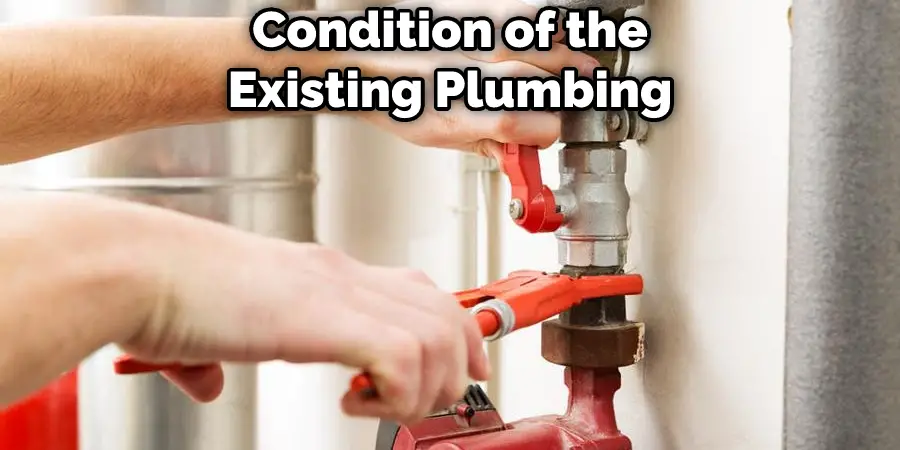
According to the search results, the cost of adding a bathroom to a detached garage can range from $3,000 to $30,000, depending on the complexity of the project and the materials used. Simple bathroom remodels can cost around $3,000 to $5,000, while new additions can cost upwards of $25,000 to $30,000. It’s essential to create a detailed budget for the project, considering all the costs involved, to ensure that the project is completed within your budget.
It’s essential to shop around and get multiple quotes from different contractors to ensure you get the best project price. It’s also essential to ensure that the contractor is licensed, bonded, and insured and that the project is completed safely and to the highest standards.
Step 6: Choosing the Right Septic System
If the detached garage is not connected to the main sewer line, a septic system will be required to manage the wastewater from the bathroom. Choosing the right septic system is an essential step in the process of adding a bathroom to a detached garage.
There are several types of septic systems to choose from, including traditional septic tanks, aerobic treatment units (ATUs), and advanced treatment systems (ATS). Each type has its own advantages and disadvantages; choosing the one that best suits your needs and budget is essential.
Traditional septic tanks are the most common type of septic system and are generally the most affordable option. They work by separating liquids and solids, allowing them to be absorbed into the soil while settling into the tank’s bottom. However, traditional septic tanks require regular maintenance and pump-outs to prevent the solids from overflowing.
Aerobic treatment units (ATUs) use oxygen to treat the wastewater before it is released into the soil. They are more efficient than traditional septic systems and require less maintenance, but they tend to be more expensive.
Advanced treatment systems (ATS) use advanced technology to treat wastewater and are the most efficient and environmentally friendly option, but also the most expensive.

It’s important to consult with a septic system professional to determine the best septic system for your needs and to ensure that it is properly installed and maintained. It’s essential to consider factors such as the size of the septic system, the cost, and the maintenance requirements when choosing the right septic system for your bathroom in the detached garage.
FAQs About Adding a Bathroom to a Detached Garage
Can You Put a Bathroom in a Garage?
Yes, it is possible to put a bathroom in a garage. Still, it is important to comply with local building codes and regulations and secure the necessary permits before starting the project. Additionally, proper planning and evaluation of the garage’s plumbing and electrical requirements are crucial for successfully installing a bathroom in a garage.
Can You Add a Bathroom Anywhere?
Yes, you can add a bathroom almost anywhere in a house, but the feasibility and cost will depend on the location’s plumbing and electrical setup and the desired bathroom style. It can be done in any area of the house, but the common areas are the basement, closet, garage, attic, and the addition of a new floor. Adding a bathroom can increase the value of the property.
Conclusion
In conclusion, adding a bathroom to a detached garage can be complex and costly. Still, with careful planning and consideration, it can also be a great addition to your home. The process includes checking local laws and securing necessary permits, evaluating the garage’s plumbing and electrical requirements, measuring the garage and planning the bathroom layout according to the International Residential Code, considering ventilation, plumbing, and drainage requirements, installation and costs, and choosing the right septic system if necessary.
It’s essential to consult with professionals such as architects, builders, plumbers, and septic system experts to ensure that the project is completed safely, efficiently, and according to the building codes. It’s also essential to create a detailed budget for the project, considering all the costs involved, to ensure that the project is completed within your budget.
Overall, adding a bathroom to a detached garage can be a great way to increase the value and functionality of your home. With proper planning and preparation, you can enjoy the convenience and comfort of having a bathroom in your detached garage.

